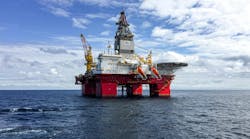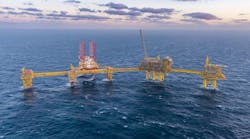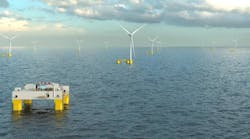Offshore staff
WASHINGTON, DC – The American Petroleum Institute has published five recommended practices for the design, construction, and maintenance of offshore structures used in oil and natural gas drilling and production operations.
“Technological improvements mean offshore resources that were once out of reach can now be tapped, and the guidelines for those who build and maintain offshore platforms must keep pace,” says API Director of Standards David Miller. “API continuously revises existing standards and develops new ones because innovation and change are constant features of our industry.”
RP 2A-WSD, 22nd Edition, Planning, Designing, and Constructing Fixed Offshore Platforms—Working Stress Design serves as a guide for the design and construction of new fixed offshore platforms and for the relocation of existing platforms used for the drilling, development, production, and storage of hydrocarbons offshore.
RP 2MET, 1st Edition, Derivation of Metocean Design and Operating Conditions sets general parameters for using meteorological and oceanographic (metocean) conditions to inform the design, construction, and operation of all types of offshore structures used in the petroleum and natural gas industries.
RP 2GEO, 1st Edition, Geotechnical and Foundation Design Considerations contains requirements and recommendations for applying aspects of geoscience and foundation engineering to a broad range of offshore structures.
RP 2EQ, 1st Edition, Seismic Design Procedures and Criteria for Offshore Structures contains requirements for defining design procedures and criteria for earthquake-resistant fixed offshore structures. It also discusses the effects of seismic events on floating and partially buoyant structures.
RP 2SIM, 1st Edition, Structural Integrity Management of Fixed Offshore Structures provides guidance for managing the structural integrity of fixed structures used for the drilling, development, production, and storage of hydrocarbons offshore. Specific elements address the evaluation of structural damage, inspections above and below the water, assessing fitness-for-purpose, risk reduction, mitigation planning, and the process of decommissioning.
11/13/2014




